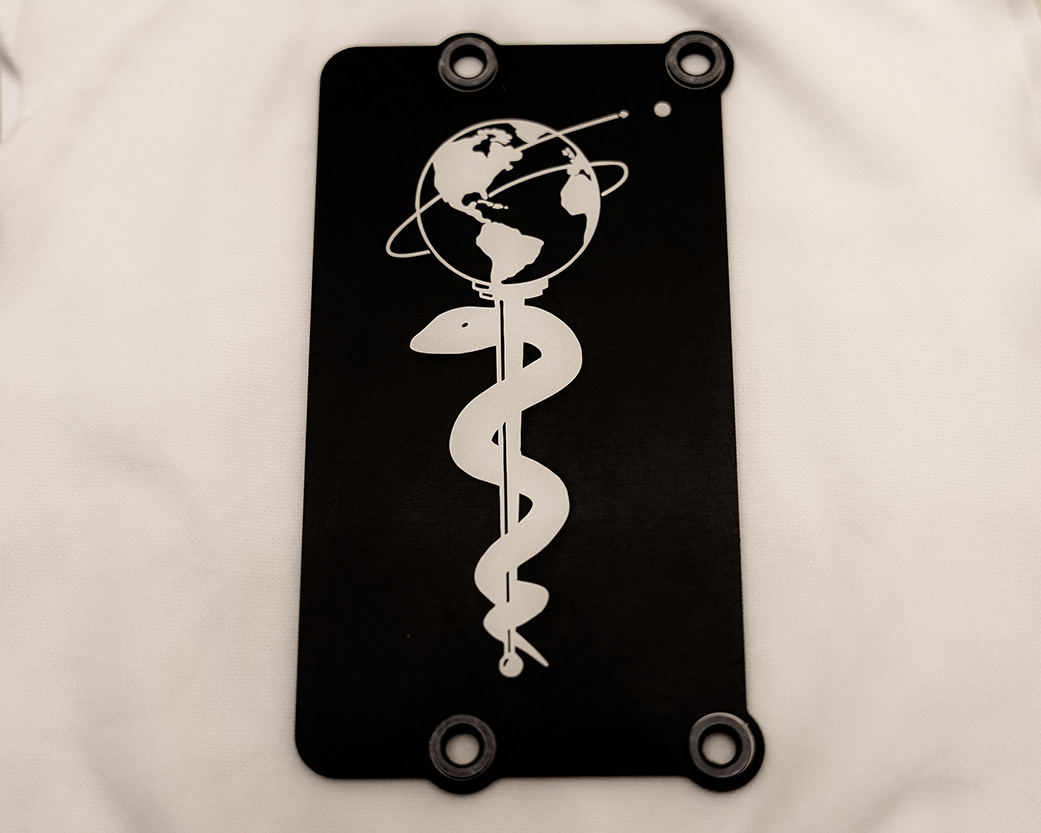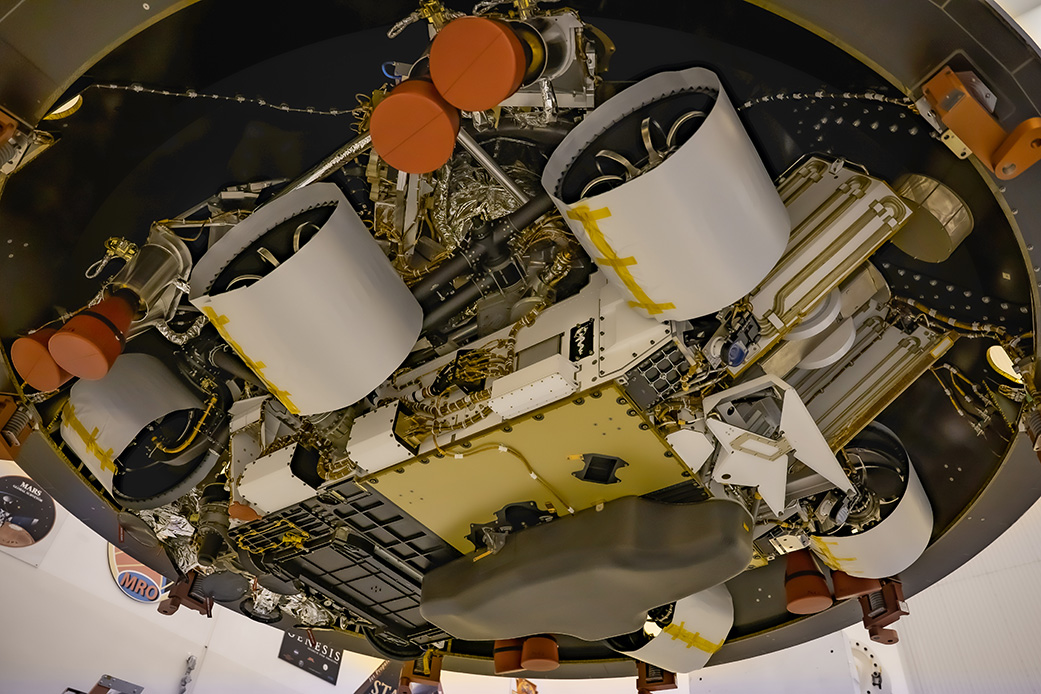
NASA's next Mars rover will bear to the Red Planet a tribute to brave healthcare workers fighting a pandemic here on Earth.
The Mars 2020 rover Perseverance, which is scheduled to launch on July 20, has been outfitted with a small aluminum plate honoring the doctors, nurses and other folks fighting to slow the spread of the novel coronavirus and treating the people suffering from COVID-19, the disease it causes, NASA officials announced today (June 17).
"We wanted to demonstrate our appreciation for those who have put their personal well-being on the line for the good of others," Perseverance deputy project manager Matt Wallace, of NASA's Jet Propulsion Laboratory in Pasadena, California, said in a statement. "It is our hope that when future generations travel to Mars and happen upon our rover, they will be reminded that back on Earth in the year 2020 there were such people."
Related: NASA's Mars 2020 rover Perseverance in pictures

The 3-by-5-inch (8 by 13 centimeters) plate features the staff-and-serpent symbol of the medical community holding up Earth, from which a spacecraft is departing for the Red Planet. The plate has been affixed to the left side of the six-wheeled Perseverance's chassis, between the middle and rear wheels, NASA officials said.
The coronavirus pandemic complicated the lives of Perseverance team members considerably, just as it did for the rest of us. The outbreak hit as mission engineers and technicians were beginning final preparations for launch, which will occur from Florida's Cape Canaveral Air Force Station.
"It really began to affect us in mid-March," Wallace said during a news conference today. "We were at a critical time in the processing for the spacecraft. All of the elements were down at Kennedy Space Center, and we had to fully assemble and do the final testing of the spacecraft. It had to be done right — you can't make a mistake at that point — and of course the environment made that a lot more difficult."
Get the Space.com Newsletter
Breaking space news, the latest updates on rocket launches, skywatching events and more!
Though the pandemic forced NASA to close many of its facilities, work on Perseverance continued, with appropriate safety precautions. The mission's launch window closes in mid-August, and if the rover doesn't get off the ground by then, it will have to wait until late 2022 for its next chance. (Launch windows for Mars missions come around just once every 26 months, when Earth and the Red Planet are both on the same side of the sun.)
"If we have to take Perseverance and put it back into storage for a period of two years, it could cost half a billion dollars," NASA Administrator Jim Bridenstine said during today's news conference.
That would be on top of the mission's current price tag, which totals about $2.7 billion, including science operations on the Red Planet, agency officials said.
NASA similarly "protected" progress toward one other launch throughout the pandemic — the May 30 liftoff of Demo-2, SpaceX's first crewed mission, which sent agency astronauts Bob Behnken and Doug Hurley to the International Space Station.
Related: SpaceX's historic Demo-2 test flight with astronauts in photos
Bridenstine and other NASA officials urged people not to come out to Florida for the Demo-2 launch, citing safety concerns surrounding the coronavirus. But the agency will not make a similar request about Perseverance's liftoff.
"We're not telling people not to visit for this launch," Bridenstine said today. "We're asking people to follow the guidelines of the governor of Florida. We want everybody to practice social distancing, and if you're within 6 feet [of someone else], make sure you're wearing a mask — those kind of things."
Whenever it lifts off during this summer's window, Perseverance will land inside the 28-mile-wide (45 kilometers) Jezero Crater on Feb. 18, 2021. The car-size robot will assess the ancient habitability of Jezero, which hosted a lake and a river delta billions of years ago, and it will also look for signs of long-dead microbial life.
In addition, Perseverance will collect and cache several dozen samples, which NASA and the European Space Agency will work together to bring back to Earth, perhaps as early as 2031. Scientists in labs around the world will then pore over this pristine Red Planet material, looking for evidence of ancient Mars life and other information about the planet's history and evolution.
The Mars 2020 mission will also test out several new exploration technologies. For example, one of Perseverance's seven science instruments will generate oxygen from Mars' thin, carbon dioxide-dominated atmosphere. Such gear, if scaled up considerably, could help humans establish a foothold on the Red Planet, NASA officials have said.
And riding to Mars on Perseverance's belly is a small helicopter named Ingenuity, which will make a few short flights in the Red Planet's sky. No rotorcraft has ever operated on a world beyond Earth. If Ingenuity performs well, future Mars missions could lean on choppers for a variety of purposes, from data collection to scouting out driving routes and science targets for rovers.
- Mars 2020: The Red Planet's next rover
- Meet 'Perseverance': NASA's Mars 2020 rover has a new name
- Photos: Ancient Mars lake could have supported life
Mike Wall is the author of "Out There" (Grand Central Publishing, 2018; illustrated by Karl Tate), a book about the search for alien life. Follow him on Twitter @michaeldwall. Follow us on Twitter @Spacedotcom or Facebook.
OFFER: Save 45% on 'All About Space' 'How it Works' and 'All About History'!
For a limited time, you can take out a digital subscription to any of our best-selling science magazines for just $2.38 per month, or 45% off the standard price for the first three months.
Join our Space Forums to keep talking space on the latest missions, night sky and more! And if you have a news tip, correction or comment, let us know at: community@space.com.

Michael Wall is a Senior Space Writer with Space.com and joined the team in 2010. He primarily covers exoplanets, spaceflight and military space, but has been known to dabble in the space art beat. His book about the search for alien life, "Out There," was published on Nov. 13, 2018. Before becoming a science writer, Michael worked as a herpetologist and wildlife biologist. He has a Ph.D. in evolutionary biology from the University of Sydney, Australia, a bachelor's degree from the University of Arizona, and a graduate certificate in science writing from the University of California, Santa Cruz. To find out what his latest project is, you can follow Michael on Twitter.










